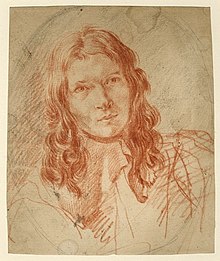
Jan Josephszoon van Goyen was a Dutch landscape painter. The scope of his landscape subjects was very broad as he painted forest landscapes, marine paintings, river landscapes, beach scenes, winter landscapes, cityscapes, architectural views and landscapes with peasants. The list of painters he influenced is much longer. He was an extremely prolific artist who left approximately twelve hundred paintings and more than one thousand drawings.

David Vinckboons was a Dutch Golden Age painter born in Mechelen, Southern Netherlands. Vinckboons, whose name is often spelled as Vingboons, Vinghboons, Vinckebonis or Vinckboom, had at least ten children. His sons were the cartographer and watercolourist Johannes and the architects Justus and Philip. Vinckboons himself died in Amsterdam.

Adriaen van der Werff was a Dutch painter of portraits and erotic, devotional and mythological scenes. He painted several works for the Medicis. His brother, Pieter van der Werff (1661–1722), was his principal pupil and assistant.

Cornelis Hofstede de Groot, was a Dutch art collector, art historian and museum curator.

Pieter Wouwerman was a Dutch Golden Age landscape painter.

Jacob Vrel was a Dutch, Flemish, or Westphalian painter of interiors and urban street scenes during the Dutch Golden Age (1588–1672). He was likely most active from 1654 to 1662.

St. Mark is an oil-on-canvas painting by the Dutch Golden Age painter Frans Hals, painted in 1625. It was purchased by Russian philanthropist Alisher Usmanov from the art dealer Colnaghi, London in September 2013 for the Pushkin Museum and donated by him to that museum in November that year, where it still hangs.
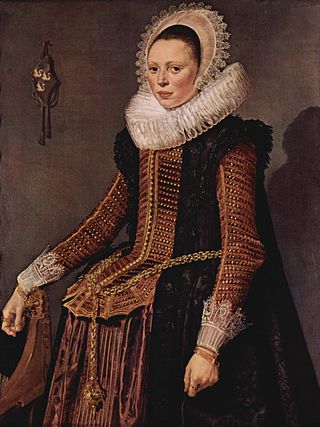
Portrait of a Woman Standing (Kassel) is a painting by the Dutch Golden Age painter Frans Hals, painted in 1618–1620 and now in Gemäldegalerie Alte Meister (Kassel). It is considered a pendant portrait to the Portrait of a Man Standing, in the same museum.

Catharina Both van der Eem is a painting by the Dutch Golden Age painter Frans Hals, painted in 1620 and now in Louvre Museum. It is considered a pendant portrait to the Portrait of Paulus van Beresteyn, in the same museum.
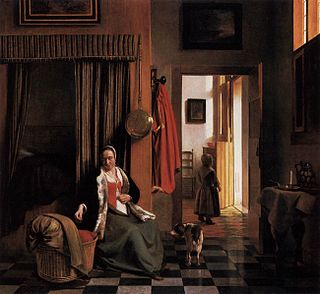
Woman lacing her bodice beside a cradle is an oil-on-canvas painting by the Dutch painter Pieter de Hooch, created c. 1660–1663. It is part of the collection of the Gemäldegalerie, Berlin.
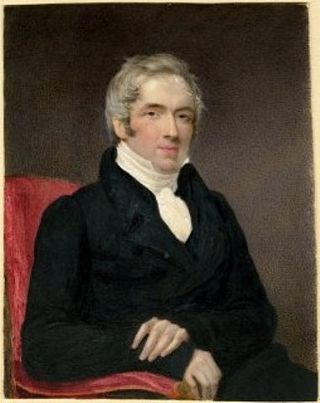
John Smith (1781–1855) was a 19th-century British art dealer who developed the concept of the catalogue raisonné.

The Ray of Light, also known as Le Coup de Soleil, is an oil on canvas painting by the Dutch painter Jacob van Ruisdael. It is an example of Dutch Golden Age painting and is now in the collection of the Louvre Museum.

View of Bentheim Castle is an oil on canvas painting of Burg Bentheim by the Dutch landscape painter Jacob van Ruisdael. It is an example of Dutch Golden Age painting and is now in the collection of the Rijksmuseum.

A Wooded Marsh is an oil on canvas painting by the Dutch landscape painter Jacob van Ruisdael. It is an example of Dutch Golden Age painting and is now in the collection of the Hermitage Museum in St. Petersburg, Russia.

Dune Landscape near Haarlem, also known as The Bush and The Thicket near Haarlem, is an oil on canvas painting by the Dutch Golden Age painter Jacob van Ruisdael. It is in the collection of the Louvre in Paris.
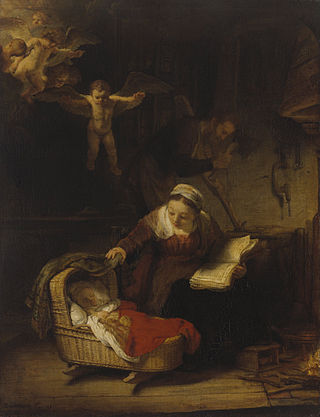
The Holy Family with Angels (1645) is an oil painting on canvas by the Dutch painter Rembrandt. It is an example of Dutch Golden Age painting and is now in the collection of the Hermitage Museum.

Panoramic view of the Amstel looking toward Amsterdam is a 17th-century oil on canvas painting by the Dutch Golden Age painter Jacob van Ruisdael. It is in the collection of the Fitzwilliam Museum in Cambridge.

Evening Landscape: A Windmill by a Stream is a 17th-century oil on canvas painting by the Dutch Golden Age painter Jacob van Ruisdael. It is in the collection of Queen Elizabeth II, on display at the Queen's Gallery at Buckingham Palace. It was acquired by King George IV in 1810.

View of Haarlem from the Northwest, with the Bleaching Fields in the Foreground is an oil on canvas painting by the Dutch landscape painter Jacob van Ruisdael. It is an example of Dutch Golden Age painting and is now in the collection of the Rijksmuseum.

The Rape of Ganymede is an oil painting of 1635 by the Dutch Golden Age painter Rembrandt, depicting the myth of Ganymede. It is in the collection of the Gemäldegalerie Alte Meister in Dresden.
